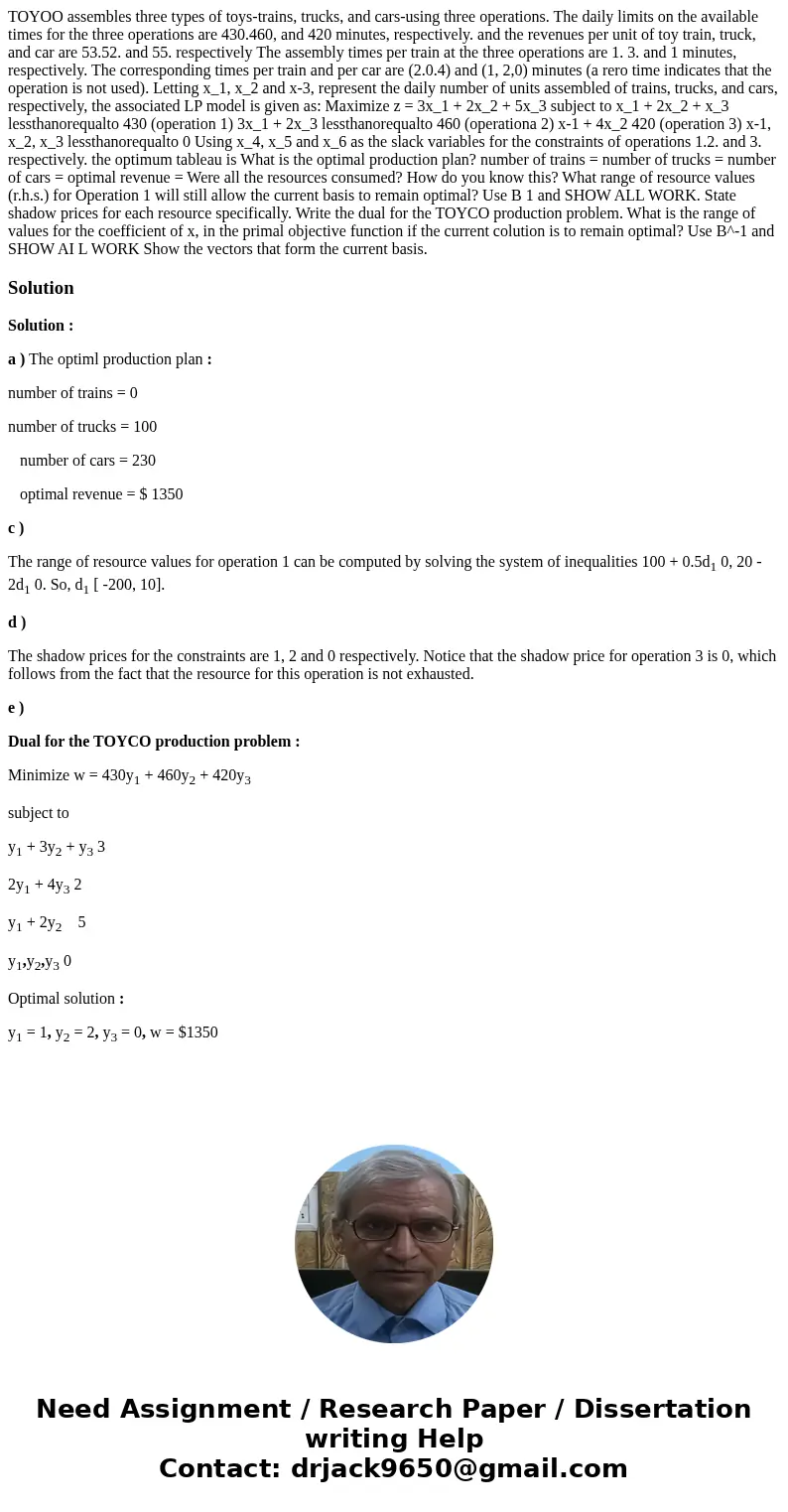TOYOO assembles three types of toystrains trucks and carsusi
TOYOO assembles three types of toys-trains, trucks, and cars-using three operations. The daily limits on the available times for the three operations are 430.460, and 420 minutes, respectively. and the revenues per unit of toy train, truck, and car are 53.52. and 55. respectively The assembly times per train at the three operations are 1. 3. and 1 minutes, respectively. The corresponding times per train and per car are (2.0.4) and (1, 2,0) minutes (a rero time indicates that the operation is not used). Letting x_1, x_2 and x-3, represent the daily number of units assembled of trains, trucks, and cars, respectively, the associated LP model is given as: Maximize z = 3x_1 + 2x_2 + 5x_3 subject to x_1 + 2x_2 + x_3 lessthanorequalto 430 (operation 1) 3x_1 + 2x_3 lessthanorequalto 460 (operationa 2) x-1 + 4x_2 420 (operation 3) x-1, x_2, x_3 lessthanorequalto 0 Using x_4, x_5 and x_6 as the slack variables for the constraints of operations 1.2. and 3. respectively. the optimum tableau is What is the optimal production plan? number of trains = number of trucks = number of cars = optimal revenue = Were all the resources consumed? How do you know this? What range of resource values (r.h.s.) for Operation 1 will still allow the current basis to remain optimal? Use B 1 and SHOW ALL WORK. State shadow prices for each resource specifically. Write the dual for the TOYCO production problem. What is the range of values for the coefficient of x, in the primal objective function if the current colution is to remain optimal? Use B^-1 and SHOW AI L WORK Show the vectors that form the current basis.
Solution
Solution :
a ) The optiml production plan :
number of trains = 0
number of trucks = 100
number of cars = 230
optimal revenue = $ 1350
c )
The range of resource values for operation 1 can be computed by solving the system of inequalities 100 + 0.5d1 0, 20 - 2d1 0. So, d1 [ -200, 10].
d )
The shadow prices for the constraints are 1, 2 and 0 respectively. Notice that the shadow price for operation 3 is 0, which follows from the fact that the resource for this operation is not exhausted.
e )
Dual for the TOYCO production problem :
Minimize w = 430y1 + 460y2 + 420y3
subject to
y1 + 3y2 + y3 3
2y1 + 4y3 2
y1 + 2y2 5
y1,y2,y3 0
Optimal solution :
y1 = 1, y2 = 2, y3 = 0, w = $1350

 Homework Sourse
Homework Sourse